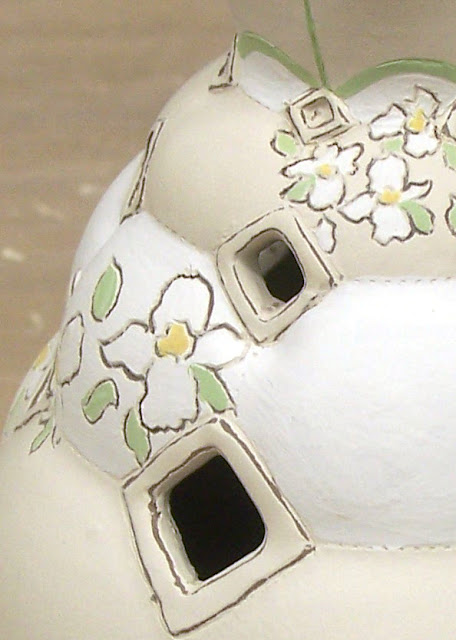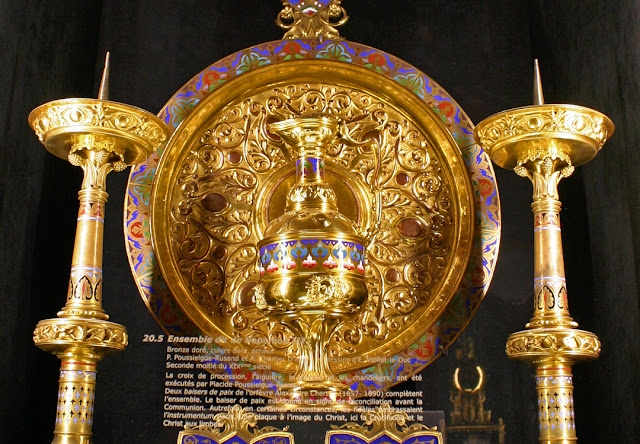Click here to watch Chris Staley's video on creativity.Chris Staley's short video got me thinking about
creativity and the brain again. The central question "Can you teach creativity?" is one that I have heard bouncing around many art studios at different times. One camp usually answers "no" followed by some version of "some people are just more creative than others". The other camp usually says "yes" which is followed by some version of "all people are creative".
I fall in to the "yes" camp, but I've also experienced that some people act more creativity than others. The key word here is ACT more creatively. Through years of my own learning and research into neural anatomy I have come to believe that creative thought is generated by action. The myth behind the creative genius is that their brains are built to have more creative thoughts. A more realistic statement is that an individual who engages in consistant creative activity shapes his/her brain to have more creative thoughts. The differences in the neural structure of a creative "genius" and a regular person aren't given at birth. They are created as the individual experiences the world around them.
Creative action is a specific activity that has specific neural results. Brain development follows the same rules as muscle development. A routine of regular exercise naturally leads to a fit body the same way that a life built around creative action yields a mind that is creatively fit. One aspect of physical training that pertains to creativity is the need for variation. If you repeat a physical activity at the same duration and level of difficulty, the body first adjusts and then plateaus resulting in a lack of growth. The way to continue growth is to engage in physical activities that have variety. In the sports world this is cross training.
In the education world the idea of cross training is equally relevant. To teach creativity you must engage the mind in continually new ways. This includes aesthetic training but also surprisingly non-art-related training. Ceramic education is perfect for this because we need to learn so many different disciplines to be successful. My non-ceramic friends are always surprised that our education includes chemistry (glazes) and physics/structural engineering (kilns and ceramic forms). These seemingly non-art studies create benefits in our creative practice because their opportunities for problem solving shape the brain.
There are a whole host of theories about methods that can be used for priming the brain for creativity.
Click here to watch neuroscientist Jonah Lehrer talk about increasing creative expression. He mentions the role that psychological interpretation of our surroundings can play in our creativity. He mentions a study where participants are given a basic creativity test in a blue room or a red room. Because blue is associated with the skyline and freedom, participants score higher than their red counterparts. The main point I want to make is that teaching creativity is about shaping our brains with creative exercise and then getting out of the way to let it do its job. The more creative activity the individual undertakes, the more their brain will produce creative ideas.
As I run across more blog posts and articles on creativity I am starting to think we might be asking the wrong questions about creativity. We might benefit from shifting the question from how to teach creativity in an institutional setting to how to teach individuals to craft questions that yield creative answers. The ability to set up aesthetic problem solving scenarios for oneself is a skill that continues to pay dividends long after a formal education is over. When interviewing for grad school I asked a professor, "What are the benefits of an MFA versus working in the field?" Her answer still interests me. (I'm paraphrasing.) She said that grad school asks different questions of a person than just working in the field. She went on to imply that a successful academic environment creates questions which at time are unanswerable, fueling an artist's studio practice. This external dialog starts in school but migrates inward as the artist leaves school.
I'll end this post with one of the questions that are at the core of my studio practice these days. I'd also love to hear other people's studio questions if you would like to share them on the blog.
-How can I create an association in the viewer between honeysuckle patterns and the first smell of honeysuckle in the spring? Once a connection is made how does the memory of this smell relate to a feeling of growth or an inner longing for life?
-How can I create a volume that feels stable while also giving the impression that it is expanding?
-How much of an asymmetrical pattern reference is needed for the viewer to feel there is organizational cohesion within the piece?
![]()



































































































































